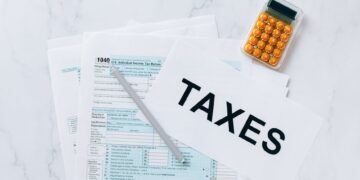Mastering ETF Investments: A Beginner’s Guide to Diversifying Your Portfolio
Exchange-Traded Funds (ETFs) are a crucial component of any modern investment strategy, especially for beginners looking to diversify their investment portfolios. This comprehensive guide will walk you through the basics of ETF investments and show you how to leverage these versatile tools to build a robust and diversified portfolio.
Understanding ETFs
An ETF, or Exchange-Traded Fund, is a type of investment fund that tracks an index, commodity, bonds, or a basket of assets like an index fund, but trades like a stock on an exchange. ETFs experience price changes throughout the day as they are bought and sold on stock exchanges. A significant advantage of ETFs is that they combine the diversification of mutual funds with the ease of trading associated with stocks.
Benefits of Investing in ETFs
- Liquidity: ETFs are highly liquid, meaning they can be bought and sold during trading hours at current market prices.
- Diversification: With a single transaction, ETFs allow investors to buy a broad portfolio of assets, helping to spread risk.
- Lower Costs: Generally, ETFs come with lower fees than mutual funds, partly because many are passively managed.
- Transparency: ETF holdings are disclosed daily, ensuring investors are well-informed of their investment components.
Choosing the Right ETFs for Your Portfolio
When selecting ETFs, consider your financial goals, risk tolerance, and investment timeline. ETFs are available in various categories, including:
- Stock ETFs – track a particular stock market index.
- Bond ETFs – invest in bonds and offer regular income through dividends.
- Sector ETFs – focus on a specific industry sector.
- Commodity ETFs – invest in commodities like gold or oil.
- International ETFs – provide exposure to overseas markets.
Considerations When Choosing ETFs
- Expense Ratio: Always check the cost of owning an ETF, known as the expense ratio, which can impact your returns.
- Trading Volume: A higher trading volume generally means better liquidity, making it easier to buy or sell the ETF.
- Tracking Error: This is the difference between the performance of the ETF and its underlying index, due to factors like management fees and transaction costs.
How to Buy ETFs
ETFs can be purchased through most online brokerages, just like stocks. Here’s how to get started:
- Open a Brokerage Account: Choose a reputable online broker. Ensure they offer access to the ETFs you are interested in.
- Research: Use tools provided by the brokerage to search and compare different ETFs based on factors such as performance history, fees, and fund size.
- Place an Order: Once you choose an ETF, you can place an order. You may opt for a market order or a limit order, depending on your trading strategy.
- Monitor Your Investment: Keep track of your ETF’s performance and adjust your holdings as necessary, considering changing market conditions and your investment objectives.
ETF Investment Strategies
ETFs offer flexibility in investment strategies that can be tailored to any investor’s objectives:
- Buy and Hold: This strategy involves purchasing ETFs and holding them over a long period to participate in the market growth.
- Tactical Adjustments: Investors may increase the weight of specific sectors within their ETF investments depending on the economic outlook and market trends.
- Hedging: Some ETFs can be used to hedge against risks. For example, inverse ETFs increase in value when the market declines, providing a counterbalance to losses in other investments.
Common Questions About ETF Investments
Are ETFs safer than stocks?
ETFs provide inherent diversification which generally makes them less volatile than individual stocks. However, like all investments, ETF exposure also involves risks, the magnitude of which depends on the underlying assets.
Can you lose all your money in an ETF?
While it’s rare, especially with diversified funds, there is always a risk in any kind of investment. It’s critical to perform due diligence and potentially consult with a financial advisor.
Are ETFs good for beginner investors?
Yes, their ease of use, low entry cost, and diversification make ETFs an excellent choice for beginners aiming to build a balanced portfolio.
Final Thoughts
ETFs offer a compelling investment option for individuals aiming to diversify their portfolios, manage risks, and build wealth over time. By understanding how ETFs work, how to choose the right ones, and how to integrate them into your investment strategy, you can significantly enhance your investing savvy and financial health.
Remember investing involves risks, including the loss of principal. It is crucial to continue learning and, if necessary, consult with financial professionals to ensure your investment choices align with your financial goals and risk tolerance.

























































